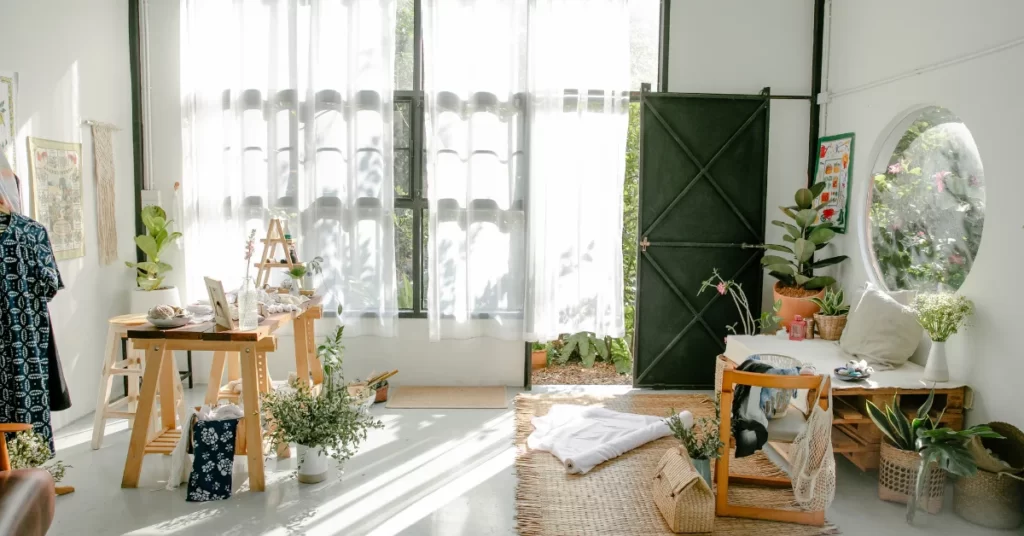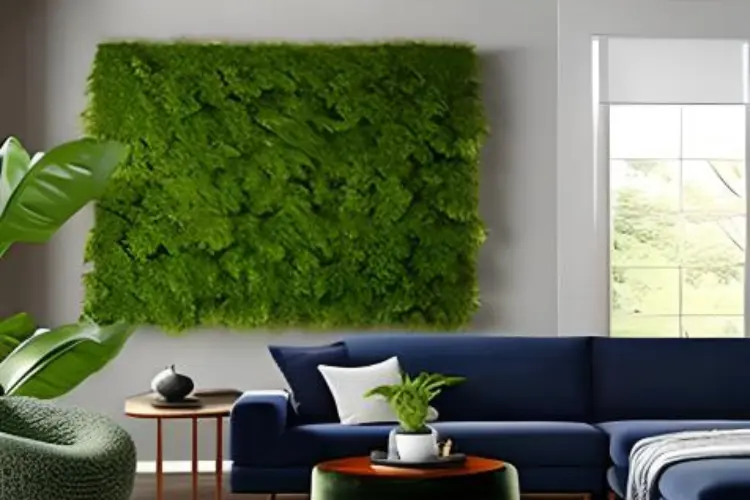Plants have always been an essential part of our lives, not only for their aesthetic value but also for their ability to purify the air and create a relaxing environment. Incorporating plants into your interior design can enhance your home’s visual appeal and provide a refreshing atmosphere that improves your well-being. In this blog, we will explore the art of decorating with plants and provide you with some useful tips and ideas to help you bring the beauty of nature indoors.

Transforming Your Home into a Refreshing and Calming Sanctuary: Tips for Incorporating Greenery into Your Interior Design
- Start with the Basics
Before you start decorating with plants, it’s important to consider the basics such as the lighting and humidity levels in your home. Some plants thrive in low-light conditions, while others require bright, indirect sunlight. It’s also essential to understand the watering needs of different plants and how to care for them properly. By taking the time to research and learn about the plants you want to incorporate into your design, you can ensure their longevity and create a healthier environment for you and your family.
- Choose the Right Plants
The type of plants you choose for your interior design depends on several factors, including the style of your home, the amount of natural light you receive, and your personal preferences. Some popular indoor plants include the snake plant, spider plant, peace lily, and pothos, which are all easy to care for and add a touch of greenery to any space. You can also choose from a variety of plant sizes, from small succulents to large floor plants, to create a more dramatic effect.
- Add Plants to Your Existing Decor
One of the easiest ways to incorporate plants into your interior design is to add them to your existing decor. You can place small potted plants on bookshelves, coffee tables, or windowsills, or hang them from the ceiling using macrame plant hangers. You can also create a botanical gallery wall by framing pressed leaves and flowers or hanging planters with cascading vines.
- Use Plants as Focal Points
Plants can also be used as focal points in your home decor. A large statement plant in a beautiful planter can add a dramatic touch to any room, while a vertical garden or living wall can make a bold statement in your living room or dining area. You can also create a natural centerpiece for your dining table using fresh flowers or a terrarium filled with succulents.
- Create a Botanical Theme
If you want to take your love for plants to the next level, you can create a botanical theme in your home decor. This involves incorporating plants, botanical prints, and natural elements such as wood, stone, and rattan furniture into your design. You can also add pops of green to your accessories, such as throw pillows, curtains, and rugs, to create a cohesive look.
Now that you have an understanding of the basics of decorating with plants, let’s dive into some tips and ideas to help you incorporate greenery into your interior design.
- Choose the Right Plants for Your Space
When it comes to decorating with plants, it’s essential to choose the right plants for your space. Consider the amount of natural light your space receives, the humidity levels, and your plant care preferences. Some low-maintenance indoor plants that are easy to care for and add a touch of green to any space include pothos, spider plants, and snake plants. If you’re looking for a statement piece, consider a fiddle leaf fig or a bird of paradise.
- Add Plants to Your Shelves and Windowsills
Shelves and windowsills are an excellent place to add small potted plants to your existing decor. Mix and match plant sizes and types to create an interesting display. You can also place plants on bookshelves or use them as bookends.
- Hang Plants from the Ceiling
Hanging plants from the ceiling is a great way to add greenery to your space without taking up valuable floor or table space. Macrame plant hangers are a trendy way to hang plants, but you can also use hooks or brackets to hang plants in pots or planters.
- Use Plants as Focal Points
Plants can be used as focal points in your interior design. A large statement plant in a beautiful planter can add a dramatic touch to any room. Vertical gardens or living walls are also a bold way to add greenery to your space. If you have a small space, consider adding a terrarium filled with succulents as a centerpiece for your coffee table.
- Create a Botanical Theme
Creating a botanical theme in your interior design is a popular trend that involves incorporating plants, botanical prints, and natural elements such as wood, stone, and rattan furniture into your space. Adding pops of green to your accessories such as throw pillows, curtains, and rugs can help tie the look together.
- Use Planters as Decorative Accents
Planters come in a variety of shapes, sizes, and materials and can be used as decorative accents in your interior design. Consider using unique planters such as baskets, vintage teapots, or repurposed tins to add a touch of personality to your space.
- Group Plants Together
Grouping plants together is a great way to create an indoor garden feel in your space. Cluster plants of varying sizes and heights together to create a visually appealing display. You can also use plant stands or shelves to elevate some plants and create depth.
Conclusion
In conclusion, decorating with plants is an excellent way to add natural beauty and improve your well-being. By choosing the right plants, understanding their care requirements, and incorporating them into your existing decor or creating a botanical theme, you can transform your home into a refreshing and calming sanctuary. Remember to experiment with different plants and display options to create a unique and personalized space that reflects your personality and style.












